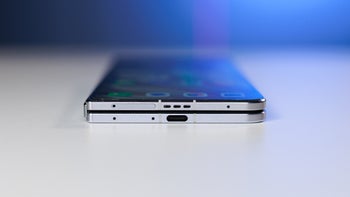Big vote on Tuesday in Europe could determine the future of the Lightning port on iPhone

The Lightning connector, used to help charge some Apple products and transfer data on devices like the iPhone and iPad, could soon see its final days. The connector replaced the unwieldy 30-pin dock connector in September 2012 with its 8-pins providing a neater experience than its predecessor. The first devices using the Lightning port included the iPhone 5, the fifth-generation iPod touch, and the seventh-generation iPod nano.
Over the years, Apple continued to stick with the Lightning port even when users wanted the iPhone to switch to the USB-C port which is the one used for charging and data transfer on most of the world's devices, including Android phones. Apple thus far has refrained from making this switch mostly because, as a proprietary Apple accessory, the company makes money on the sale of such cables.
But there is no denying that the public would prefer the additional accessory options that opening up the iPhone to USB-C would allow. Late last year an engineering student modified an iPhone X to allow it to work with a USB-C port and when the device went up for auction on eBay, it sold for $86,000.
Apple isn't totally blind to this. Last month we told you that two Apple "insiders," TF International analyst Ming-Chi Kuo and Bloomberg scribe Mark Gurman said that we could see the USB-C port make its iOS debut on the 2023 iPhone 15. Gurman also states that Apple is working on an adapter that would allow iPhone units to work with accessories designed for use with the current Lightning connector.

By next week we could know whether Apple will need to replace the Lightning port with a USB-C port on European iPhone and iPad models
Next week, Apple might be put into a position that will force it to dump the Lightning port. On June 7th, the day after Apple's WWDC developer conference kicks off, the European Union (EU) could announce the result of a vote that would force all smartphones and tablets sold in Europe to be equipped with a USB-C port. Since this would be the law in the EU, the question would be whether Apple would want to use different ports in the U.S. and Europe.
The answer to the question posed above is "probably not" and so if the legislation passes in the EU it very well could be the end of the Lightning port on the iPhone throughout the world. Regardless of whether the EU votes to make USB-C the standard in Europe or Apple decides to do it, any change probably won't occur until 2023 at the earliest.
Follow us on Google News












Things that are NOT allowed:
To help keep our community safe and free from spam, we apply temporary limits to newly created accounts: